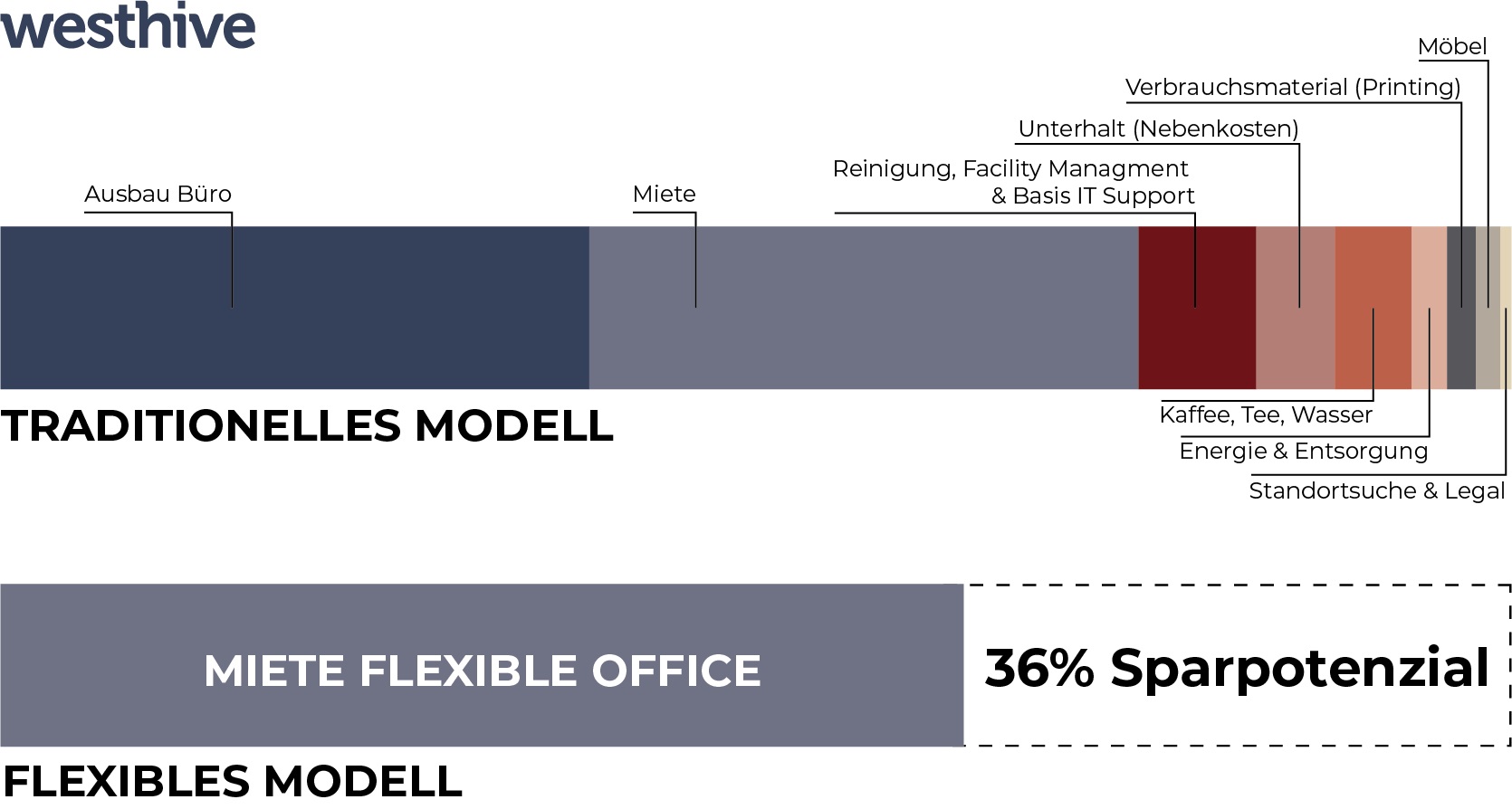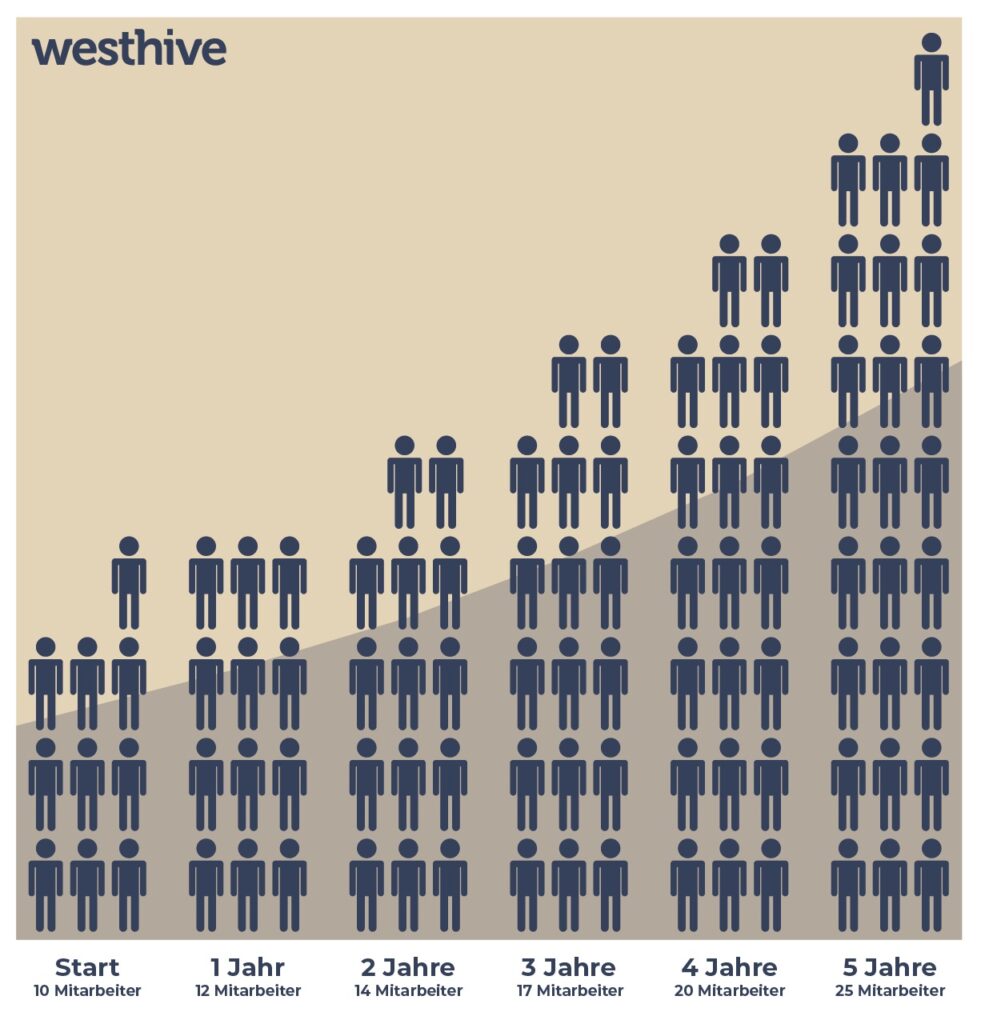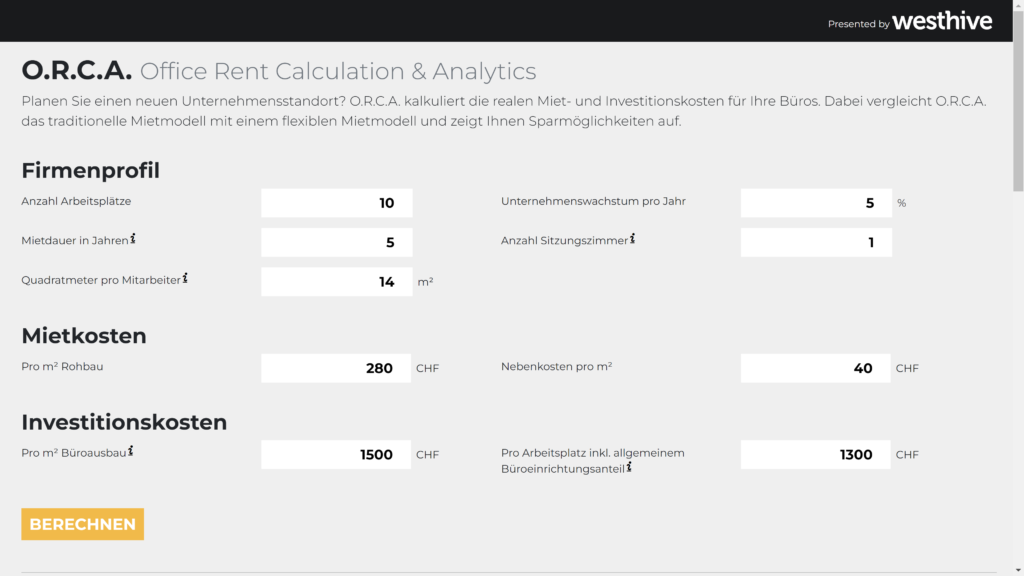In addition to the pure rental costs, there are also the utility costs. These can easily amount to around 15% of the price per square meter and typically include the costs of heating (and cooling, if available), hot water and operating costs such as caretaking, waste disposal, cleaning of general indoor and outdoor areas, snow removal, etc.
If the office is offered as a shell or noble shell, there are also finishing costs. These range from CHF 1,500 to CHF 2,000 per square meter, depending on the standard of fit-out. For an office of 150 square meters in size, this means that the finishing costs amount to more than CHF 200,000, which must be depreciated over the term of the contract, depending on the length of the lease. The difficulty here is that the shorter the rental period, the higher the annual burden. In other words: the higher the flexibility, the higher the monthly depreciation costs. Meeting rooms also come into play here: they require valuable square meters, are rarely used to 100% capacity and place an above-average burden on the equipment budget.
In addition to the costs for equipment, there are also the costs for furniture. A workstation with table, chair and storage space costs between 1000 and 1500 francs. In addition, the costs for the technical infrastructure (Internet access, WiFi access points, printers, etc.), the office equipment (flipcharts, whiteboards, document shredders, etc.) and the various supplies must also be taken into account. The latter also includes the consumables: coffee, tea, water, etc.
Last but not least, cleaning and maintenance of the premises must also be taken into account.



